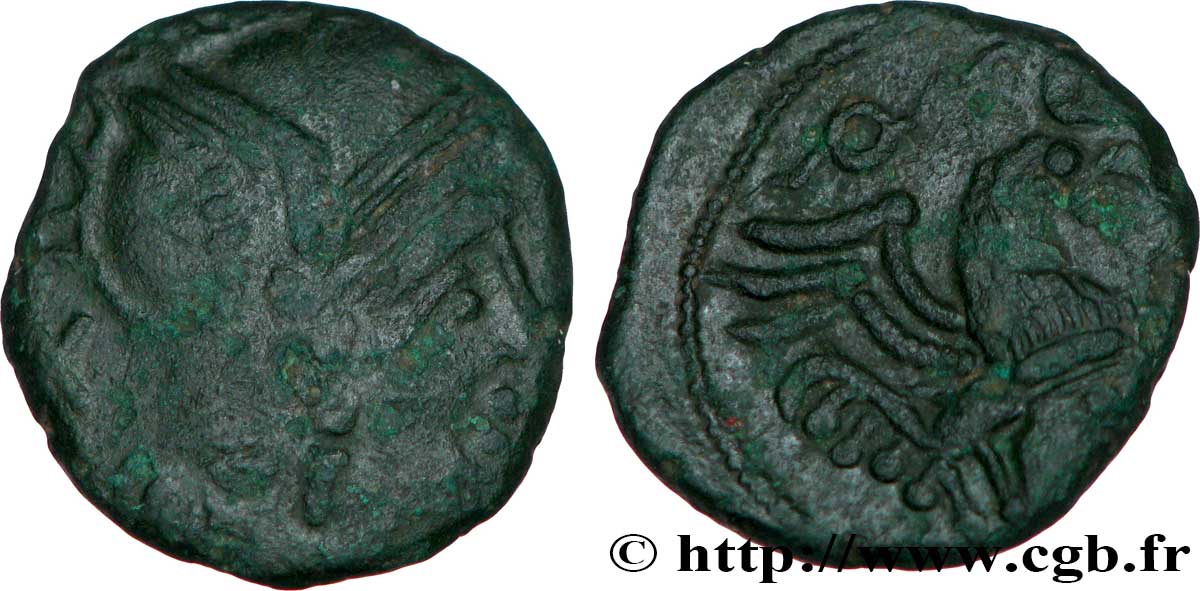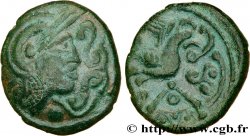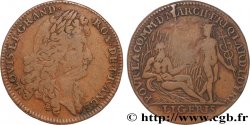bga_290373 - GALLIA - BELGICA - BELLOVACI (Región de Beauvais) Bronze au coq, “type de Bracquemont”
125.00 €
Cantidad
Añadir a su cesta

Tipo : Bronze au coq, “type de Bracquemont”
Fecha: c. 50-25 AC.
Nombre del taller / ciudad: Beauvais (60)
Metal: bronce
Diámetro: 16 mm
Eje de acuñación: 5 h.
Peso: 2,82 g.
Grado de rareza: R1
Comentarios sobre el estado de conservación:
Bronze avec un droit de frappe molle mais un très beau revers finement détaillé bien que décentré. Patine sombre
N° en los catálogos de referencia :
Anverso
Titulatura del anverso: ANÉPIGRAPHE.
Descripción del anverso: Tête casquée de Rome à droite ; derrière, X.
Reverso
Titulatura del reverso: ANÉPIGRAPHE.
Descripción del reverso: Coq debout à droite, le corps formé d'une tête humaine barbue ; devant et derrière le coq, motif serpentiforme, centré d’un annelet.
Comentario
Ce type a parfois été mal classé et interprété. Le dessin du Lambert (pl. 7, n° 35) est repris dans le Traité de Numismatique gauloise d’A. Blanchet en 1905 (fig. 39). Dans leur inventaire de 1889, Muret et Chabouillet n’avaient pas distingué le masque humain qui orne le poitrail du coq. Ce type est aujourd’hui mieux connu grâce aux travaux de L.-P. Delestrée. Cet exemplaire offre un revers particulièrement net et compréhensible !.
This type has sometimes been misclassified and interpreted. The Lambert drawing (pl. 7, n° 35) is included in the Treatise on Gallic Numismatics by A. Blanchet in 1905 (fig. 39). In their 1889 inventory, Muret and Chabouillet had not distinguished the human mask which adorns the chest of the rooster. This type is better known today thanks to the work of L.-P. Delestrée. This example offers a particularly clear and understandable reverse!
This type has sometimes been misclassified and interpreted. The Lambert drawing (pl. 7, n° 35) is included in the Treatise on Gallic Numismatics by A. Blanchet in 1905 (fig. 39). In their 1889 inventory, Muret and Chabouillet had not distinguished the human mask which adorns the chest of the rooster. This type is better known today thanks to the work of L.-P. Delestrée. This example offers a particularly clear and understandable reverse!








 Informar de un error
Informar de un error Imprimir la página
Imprimir la página Comparte mi selección
Comparte mi selección Haz una pregunta
Haz una pregunta Consignar / vender
Consignar / vender
 Descriptivo
Descriptivo















